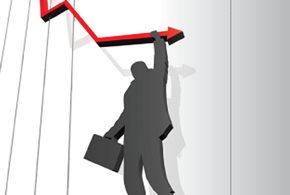The idea of receiving rewards for loyalty is nothing new. S&H Green Stamps pioneered the idea in the 1930s. For decades, the stamps were wildly popular—allowing a person to shop, fill up books of stamps and then select merchandise from a catalog. Along the way, airlines, hotels, restaurants and retailers have followed suit.
Today, most of us have a wallet brimming with punch cards and magstripe cards. In addition, smartphone apps are everywhere. While some rewards programs are effective—airlines and hotels remain reasonably attractive and Starbucks seems to come the closest to perfecting the concept—the vast majority of programs land somewhere between tolerable and annoying.
For example, Macy’s Star Rewards programs—tied to its branded American Express card—can’t decide whether it is digital or analog. Based on spending, program members receive paper certificates that can be redeemed in stores. There’s just one problem: It’s impossible to load the certificate into the Macy’s app or use it online—despite the fact that savings passes are available both digitally and on paper.
Best Buy, which runs a fairly good rewards program through its Reward Zone, occasionally sends out double points certificates or some other promotion via email. That’s fantastic—except that I have to print the certificates or coupons and bring them to the store. I’m not aware of how to get them into the app.
From here, we devolve into a murky world of points, credits and cheese sticks.
The problem with many loyalty programs is that most do nothing to engender loyalty. They simply serve up a steady drip of marketing offers and pseudo rewards.
A frequent taco club at the local cantina doesn’t encourage me to eat more tacos. A birthday coupon is great. But if it expires at the end of the month, it isn’t so great. Thanks for nothing, Alaska Airlines, Best Buy, Macy’s, Men’s Warehouse and World Market.
Actually, loyalty is a two-way street. This means surprising and delighting good customers; it means creating a better and more personalized experience; it means offering something that really means something; and it means looking at a customer’s activity and purchases more holistically. If a customer has reached an elite level for 12 years straight and then misses a year, provide the reward anyway!
As we wade further into the digital age, airlines, hotel chains, retailers, restaurants and others need to get smarter about how they interact with customers in order to foster deeper and better relationships. Businesses must use analytics to measure everything from customer lifetime value and loyalty to brand evangelism.
Otherwise, everyone is missing the points.









